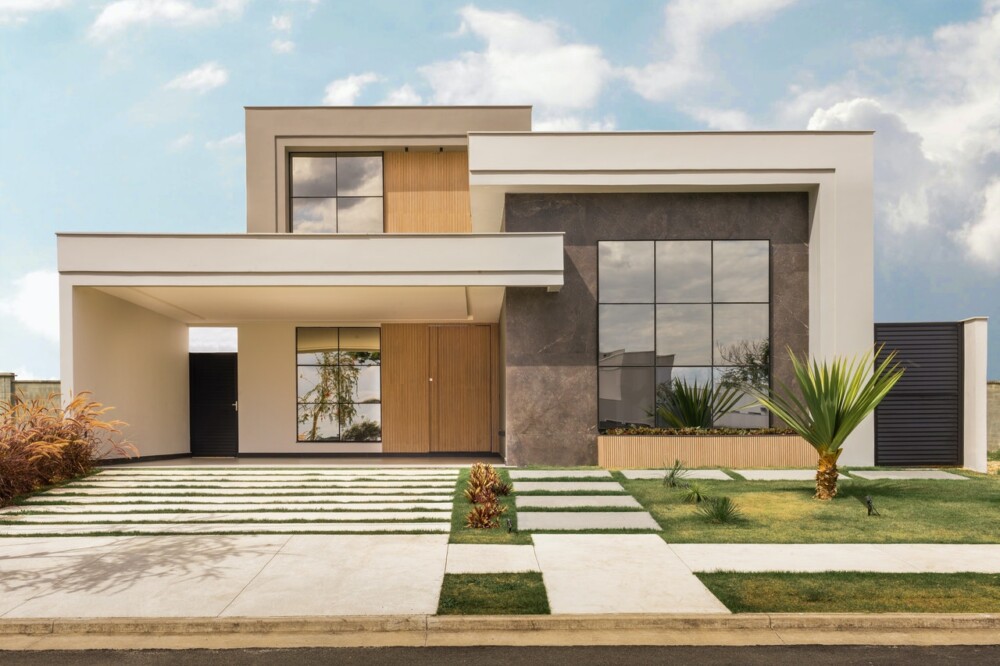
 What are 3-D houses? Are they even real? Can such a thing exist? Can such a thing be possible? Well, yes. Yes, 3D-printed houses are real. They’re a real thing that is here to stay. In 2010 or even 2012, the thought of printing a whole home would have seemed like an impossibility. Like what? Print an entire home? Yet here we are in 2021 and it is entirely possible to sit in a 3-D home hunting for an online casino bonus while you chill with an ice-cold beer!
What are 3-D houses? Are they even real? Can such a thing exist? Can such a thing be possible? Well, yes. Yes, 3D-printed houses are real. They’re a real thing that is here to stay. In 2010 or even 2012, the thought of printing a whole home would have seemed like an impossibility. Like what? Print an entire home? Yet here we are in 2021 and it is entirely possible to sit in a 3-D home hunting for an online casino bonus while you chill with an ice-cold beer!
Well, 3-D printed houses are fast becoming a thing. It is because they are easier to build than average houses and have so many advantages. It is amazing and revolutionary how technology has allowed industries and companies to explore new structures, improve the safety in construction sites, reduce waste and reduce the cost of building.
What Exactly Is a 3-D Printed House?
3-D printed houses are houses printed in layers (layer by layer) using concrete ink. Every 3-D printed house has four qualities: they possess self-supported walls, they allow for recycled materials, they have thermal insulation, and they are disaster-resistant. These houses are printed using a software design and something called a track-mounted printer. The software used for these houses builds, scales, and models the design of the house. Although 3-D printed houses have been applied to a lot of construction schemes, they are still very far from the universal application. But that’s not a problem, the technology is fast catching on, and it is estimated that by 2027, 3-D houses will be a big deal.
How Are 3-D Printed Houses Constructed?
It is pretty hard to wrap your mind around the fact that you can print a whole home. Like you can print a home where you can dance around and play free online pokies. You must be wondering how? How are these houses constructed?
Below are six steps in which 3-D printed houses can be constructed:
- Software is selected for the process. This software is used to create, scale, and model the design of the house.
- When the blueprint of the house is created, it acts as a code that will set the printer’s movements.
- A standard concrete mix is loaded into the printer. It will activate the painting process.
- The printer creates materials one layer at a time, and it shapes them too. In this step, the proper building has started.
- The layers are stacked in the pattern previously set until the house’s walls are formed and erected. It is the trickiest step of the 3-D houses creation process.
- The windows, doors, and roofs are added by hand.
These are the basic steps for creating any 3-D-Printed House.
Benefits of 3-D Printed Houses
These houses come with a lot of advantages and benefits, let’s explore them:
- time-saving,
- various designs,
- high sustainability,
- spacious,
- instant building.
- The primary benefit of a 3-D printed house is that it saves a lot of time and cost. With the time used to build a traditional standard house, one can build 3 or 4 3-D printed houses.
- 3-D printed houses boast unlimited designs using track systems that permit flexible patterns and forms.
- 3-D printed houses have high sustainability. The printers are super precise, and this helps in saving both energy and resources.
- 3-D printed houses give you the avenue to have a lot of space. Therefore, these houses are always spacious and expansive, making them super comfortable.
- They also provide immediate housing for the homeless and shelterless people. A 3-D house is an innovation that helps people.

Major Companies that Build 3-D Printed Houses
A handful of companies are breaking ground and taking significant strides in 3-D printing construction. The wonderful thing about these companies is that they are still making some changes. They are still fine-tuning their methods, thinking up more daring designs, and upgrading the materials and equipment to make houses. These companies have adequately demonstrated that technology is a big thing in houses these days. From the projects they have been undertaking, it is for sure that 3-D houses will pick up in years to come.
The major companies that are involved in 3-D printing and construction are:
- Icon
- Peri 3D Construction Printing
- XtreeE
- Clyde Construction
Icon
It is a Texas-based company that makes low-rise buildings using 3-D. They make use of the Vulcan II construction 3-D printer, and this powerful printer can create a full home in 24 hours.
Peri 3-D Construction
The headquarters of this company is located in Germany, and it is a top-tier company that creates both low-rise buildings and multi-story buildings. This company uses the COBOD BOD2 concrete printer, which functions even in harsh environmental conditions.
XtreeE
The headquarters of this company is located in France, and they are known for creating beautiful low-rise buildings. XtreeE makes use of a giant robotic arm for printing. This arm can create objects that can go up to 5 meters long and 3 meters high.
Clyde Construction
It is a Dutch company that has its headquarters in the Netherlands. They build both low-rise and high-rise buildings, and they are good at what they do. Clyde Construction makes use of the CyBe RC 3-Dp and CyBe R 3-Dp printers. These printers possess a printing speed of 200-mm/s and can produce large, long structures in just 20 minutes.
A couple of other companies are involved in 3-D printing constructions, and so many startups are coming to light.
Primary Disadvantage of 3-D Printed Houses
Everything that has an advantage definitely has a disadvantage. The major disadvantage of these houses is that the materials used in their construction are limited. The selection of raw materials for making these houses is pretty limited. 3-D printing makes use of materials that can be temperature controlled. However, not all materials can be temperature controlled enough to be used in the construction process.
Conclusion
3-D printed houses are pretty good. If you are looking to build your house, you can go for them. Despite some of the shortcomings of this technology, they continue to undergo innovations to become a permanent fixture in the housing industry. Different firms are also discovering better materials and better construction means, and, consequently, this type of house will be even easier to construct and design in a few years. 3-D houses are real and not a myth, and they are here to stay.











































